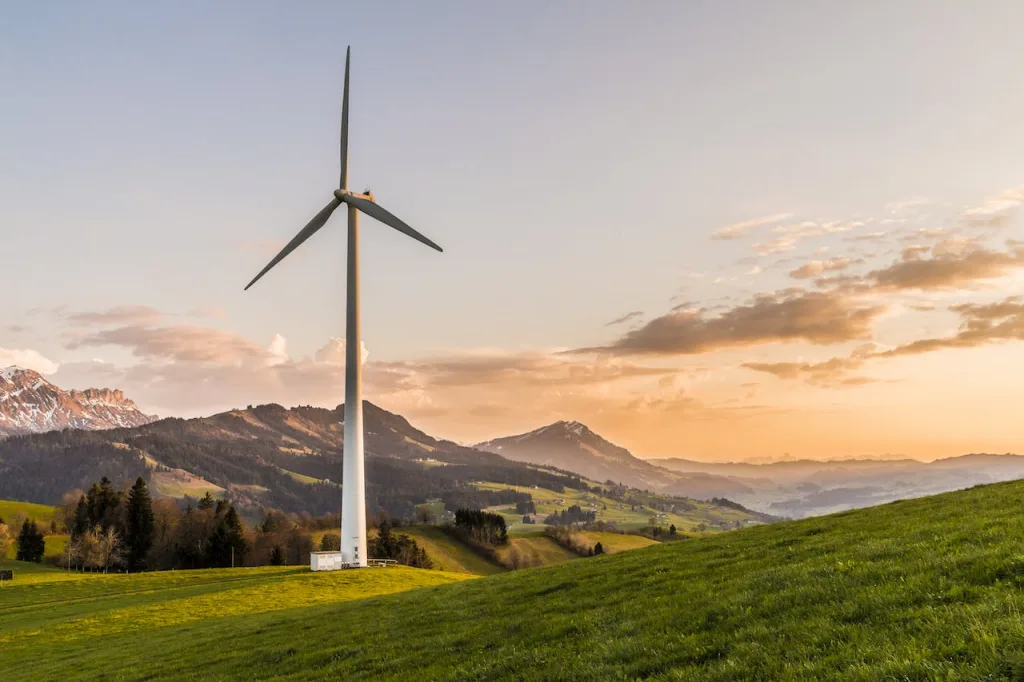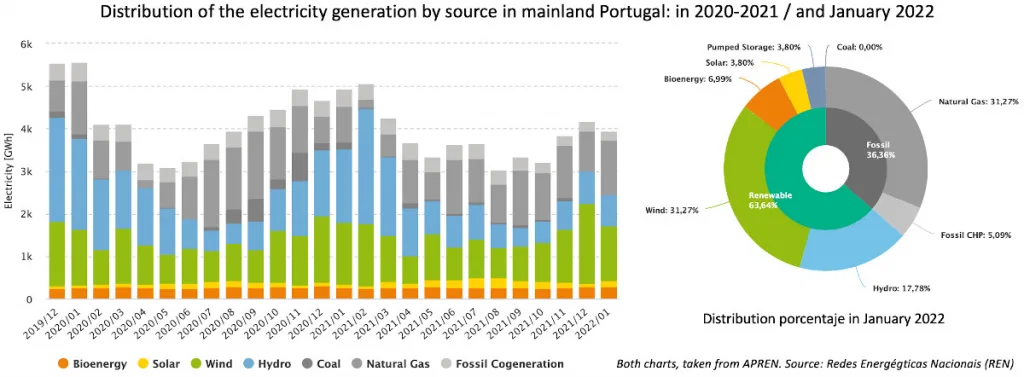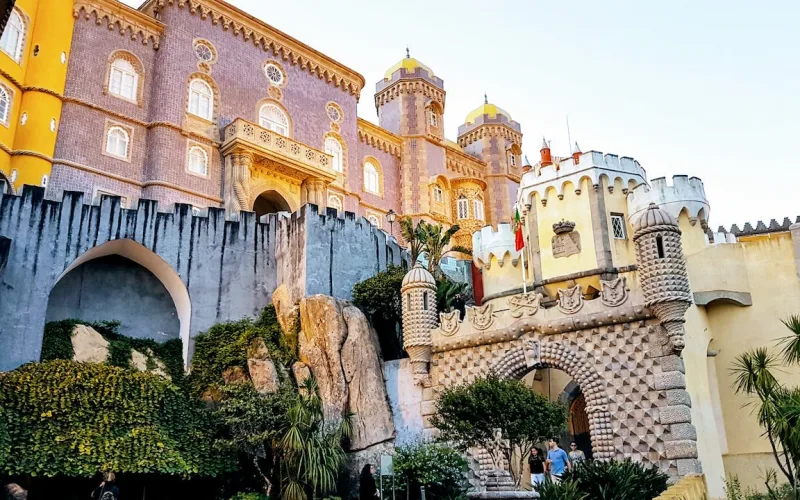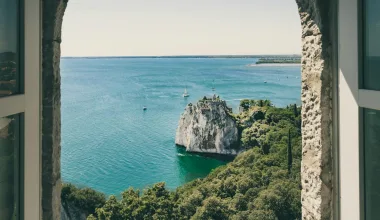Last Updated on May 14, 2024 by Ecologica Life
Portugal produced more renewable energy than it consumed for 149 consecutive hours.
In the early hours of Halloween, Portugal began a record-breaking streak. For six days, the country produced more renewable energy than it could consume.
Although this doesn’t include everything, such as transport, it’s still very interesting news.
In this article, we will take a brief look at Portugal’s renewable energy achievements and how they were achieved. We will examine the factors behind Portugal’s advancement and compare its progress with that of the EU and the US. Finally, we will comment on potential downsides of the renewable energy transition and how Portugal is dealing with them.
Table of Contents
A Record Streak

Between 31 October and 6 November 2023 (149 consecutive hours), Portugal produced 1,102 gigawatt hours (GWh) of renewable energy. This was more than the 840 GWh used by industry and households. The surplus energy was exported to Spain.
This record beats their previous record in 2019, which was 131 consecutive hours of renewable energy.
Portugal also generates most of its electricity from renewable sources throughout the year. In January 2022, mainland Portugal produced 4,085 GWh of electricity, of which 63.64% came from renewable sources.
The breakdown of renewable energy sources was as follows: wind power at 31.27%, hydroelectricity at 17.78%, bioenergy at 6.99%, solar energy at 3.80% and pumped storage hydroelectricity at 3.80%.
36.36% of the energy mix consisted of imported fossil fuels. Notably, natural gas alone accounted for 31.27% of the total energy production.

In 2020, Lisbon, the capital city of Portugal, was awarded the title of “European Green Capital“. This accolade was in recognition of its significant environmental achievements, including a 50% reduction in CO2 emissions between 2002 and 2014. Lisbon also boasts having one of the largest networks of electric vehicle charging points in the world.
There are now 36 European Green Capitals, including Amsterdam, Bristol, Copenhagen, and Glasgow.
Where Does Portugal get its Energy?
It’s important to note that fossil fuel plants were still running during the record streak. However, these national records suggest that it may be possible for Portugal to reduce fossil fuel dependency soon. Portugal doesn’t use coal anymore, but it still relies on natural gas.
Portugal’s main sources of renewable energy are wind and solar. In January 2023, the energy company EDPR announced the connection of the first hybrid solar-wind farm on the Iberian Peninsula. Hybrid farms are particularly effective because one energy source tends to pick up the slack when the other is lacking.
Hydropower and solar power also work particularly well together, as you can see in the video below:
Why is Portugal so Advanced in Renewable Energy?
Portugal is a pioneer in renewable energy. While the European Union only committed to carbon neutrality by 2050 in 2019, Portugal made this commitment in 2016. In addition, Portugal had set a target to eliminate coal as a fuel source by 2030.
Remarkably, with the closure of its last coal-fired power plant in 2021, it achieved this goal nine years ahead of schedule.
Until very recently, Portugal used as much fossil fuel as any other EU country. In 2010, Portugal imported 80% of its energy, mainly oil and natural gas. Portugal is now moving towards energy independence.
So how has Portugal been able to make this transition to renewable energy shift so quickly?
Geographic Advantages

Portugal’s geography is very conductive to renewable energy. Portugal has a long Atlantic coastline, which is ideal for wind farms. In addition, it’s southern latitude and climate are ideal for solar energy production. It also has some areas that are very ideal for hydroelectric power generation.
Policy Decisions
Portugal began its support for renewable energy with the introduction of Decree Law 189/88. This established a Feed-in Tariff (FiT) system applicable to all forms of renewable energy. This policy aimed to stimulate investment in renewable energy technologies by providing long-term contractual agreements to renewable energy producers.
In the 1990s, the EU introduced policies to encourage a unified European electricity market and promote renewable energy. The aim was to reduce environmental pollution and decouple economic growth from environmental damage. During this period, Portugal transformed its electricity market. In 1995, it moved from a state-controlled monopoly to a dual market structure consisting of a public service system and a liberalised system.
Furthermore, the Portuguese and Spanish governments made plans to integrate the two countries’ electricity markets into a single Iberian Electricity Market (MIBEL), which was launched in July 2007. Following this integration, the liberalisation of the Portuguese electricity market reached a point where all consumers had the freedom to choose and change their electricity supplier.
Public Support
There is strong public support for sustainability in Portugal. A recent study commissioned by APREN (association of renewable energies), found that 60% of respondents felt that Portugal was not doing enough to reduce greenhouse gas emissions.
In addition, over 80% of the respondents believe that the cost of electricity in Portugal is higher than the European average. In response, 88% support the use of renewable energy sources instead of fossil fuels to reduce energy prices.
This societal mindset has been instrumental in the acceptance and support of the government’s renewable energy policies.
Latecomer Advantage
The ‘latecomer advantage‘ theory distinguishes between the ‘pioneering’ and ‘follower’ countries. It suggests that ‘follower’ countries benefit from not having to incur the initial costs of developing new technologies. They can adopt advanced innovations already developed by the pioneers.
Portugal, as an intermediate economy, exemplifies this as a ‘follower’ of technological change initiated by advanced economies. This position has allowed Portugal to make significant progress in renewable energy efficiently, using the latest advancements without bearing the early development costs.
Portugal vs. EU vs. US
Most EU countries haven’t experienced a renewable energy transition as fast as Portugal’s. However, EU countries are tending to rely less on coal and fossil fuels.
In general, the EU is producing more energy from renewables and biofuels, and less from solid fossil fuels, oil, and petroleum products. However, it is producing more energy from natural gas. Nuclear energy use has not changed much over the last three decades.
Portugal isn’t even the country that uses the most renewable energy. In 2021, Iceland and Norway used a higher share of renewable energy (70-80%).

However, from 2023, 60% of Portugal’s electricity consumption comes from renewable sources, with a goal to increase to 80% by 2026.
For comparison, the US produces about 13.1% of its energy from renewable sources.
Are There Any Downsides?
There are challenges to moving to 100% renewable energy that need to be carefully managed.
- Intermittency and Reliability: Renewable sources such as solar and wind are intermittent. This can lead to reliability issues in the energy grid unless effective storage solutions or back-up systems are in place. Significant advances in energy storage technology are needed to address the intermittency of renewable energy sources.
- Environmental Impact: Although renewable energy sources are generally cleaner than fossil fuels, they still have environmental impacts. For example, large-scale solar farms and wind turbines can affect local ecosystems and wildlife. The manufacture and disposal of solar panels and wind turbines also have environmental footprints.
- Cost: Switching to renewable energy can actually increase the cost of energy, especially in the short term. If not properly managed, the increase in energy costs will affect the most vulnerable in society. That said, Pedro Amaral Jorge, President of APREN, highlighted that in Portugal, the price of electricity dropped by 3.5% in 2019 and by a further 0.4% in 2020.
- Grid Modernisation and Management: Integrating high levels of renewable energy into the existing grid requires advanced grid management technologies and significant modernisation of grid infrastructure to ensure stability and efficiency.
How Is Portugal Addressing These Issues?
Portugal is adopting several strategies and technologies to mitigate the challenges associated with the transition to renewable energy. These efforts focus on energy storage, ecological impact assessment, and green hydrogen production:
Energy Storage Development
The National Energy and Climate Plan for 2020, approved by the Portuguese government, highlights the importance of energy storage in integrating renewable energy generation into the grid, especially as Portugal moves away from fossil fuel power plants.
Ecological Impact Assessments
The construction of energy storage facilities, especially those co-located with new power production plants, requires compliance with environmental assessment rules.
However, in a controversial move, Portugal has decided to abolish mandatory EIAs for certain projects. These include green hydrogen projects, solar installations of less than 100 hectares, and wind farms with towers more than 2 km apart.
The aim is to speed up investments in green hydrogen and renewable energy. However, this move to reduce bureaucracy has been criticised by environmentalists, who are concerned about the potential impact on nature.
Green Hydrogen Production
Portugal aims to become a major producer and exporter of green hydrogen, with significant investment planned in this area. Green hydrogen, produced using solar and wind power, is seen as a key energy source for reducing pollution in various industries.
Will Portugal Stay Renewable?

Despite the potential downsides, Portugal is managing the transition to renewable energy quite well. Its success makes it likely that it will continue this path in the future.
REN, the company in charge of electricity and gas supply in Portugal, said in a statement “These significant achievements confirm that Portugal has been maintaining a sustainable trajectory in progressively integrating indigenous renewable sources, while upholding the primary objectives of supply security and service quality.”
Like the rest of Europe, Portugal is likely to continue to expand its renewable energy capacity. It has already closed all its coal-fired plants and plans to decommission all its natural gas-fired power plants by 2040.
Let us know what you think about Portugal’s energy transition in the comments. How does your country’s energy use compare?








